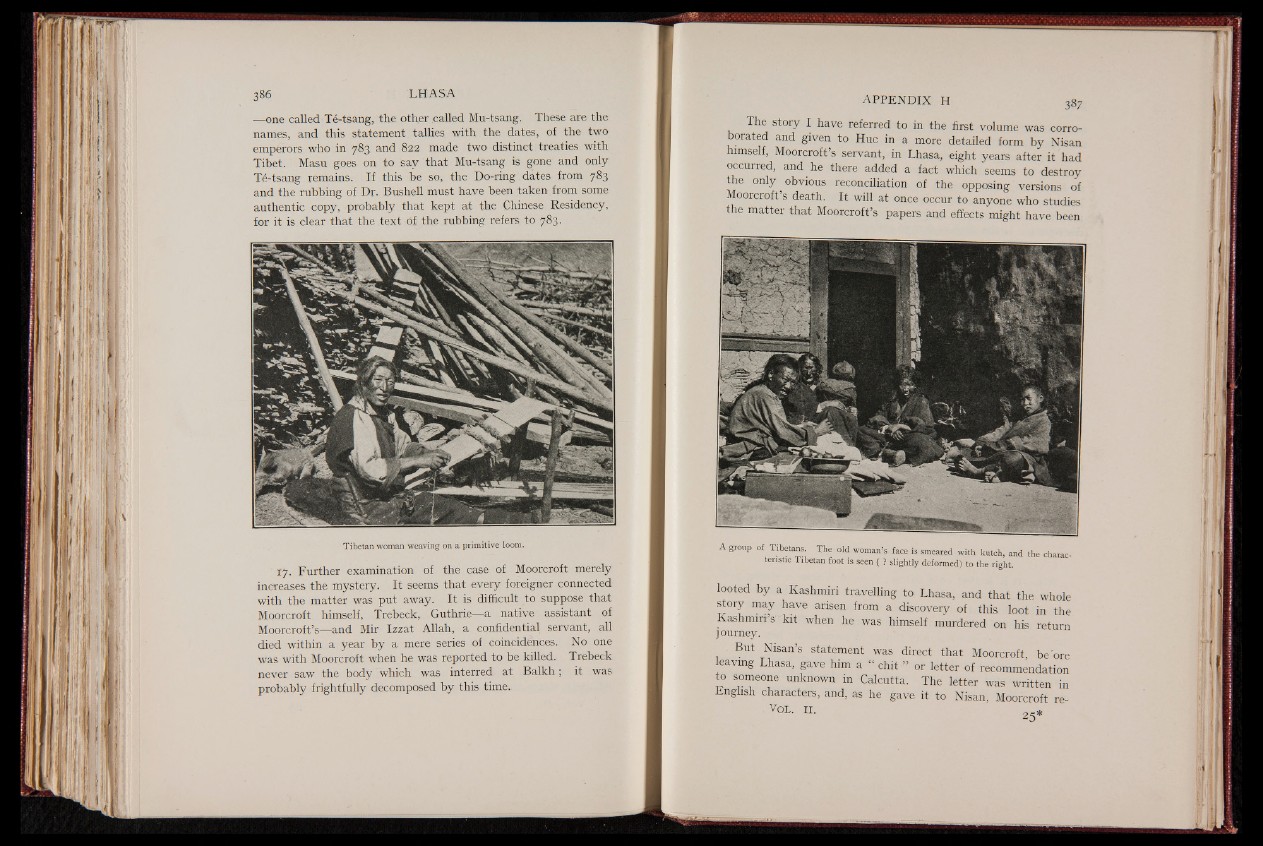
—one called Te-tsang, the other called Mu-tsang. These are the
names, and this statement tallies with the dates, of the two
emperors who in 783 and .822 made two distinct treaties with
Tibet. Masu goes on to say that Mu-tsang is gone and only
Te-tsang remains. If this be so, the Do-ring dates from 783
and the rubbing of Dr. Bushell must have been .taken from some
authentic copy, probably that kept at the Chinese Residency,
for it is clear that the text of the rubbing refers to 783.
Tibetan woman weaving on a primitive loom.
17. Further examination of the case of Moorcroft merely
increases the mystery. It seems that every foreigner connected
with the matter was put away. It is difficult to suppose that
Moorcroft himself, Trebeck, Guthrie—a native assistant of
Moorcroft’s—and Mir Izzat Allah, a confidential servant, all
died within a year by a mere series of coincidences. No one
was with Moorcroft when he was reported to be killed. Trebeck
never saw the body which was interred at Balkh; it was
probably frightfully decomposed by this time.
The story I have referred to in the first volume was corroborated
and given to Hue in a more detailed form by Nisan
himself, Moorcroft’s servant, in Lhasa, eight years after it had
occurred, and he there added a fact which seems to destroy
the only obvious reconciliation of the opposing versions of
Moorcroft’s death. It will at once occur to anyone who studies
the matter that Moorcroft’s papers and effects might have been
A group of Tibetans. The old woman’s face is smeared with kutch, and the characteristic
Tibetan foot is seen ( ? slightly deformed) to the right.
looted by a Kashmiri travelling to Lhasa, and that the whole
story may have arisen from a discovery of this loot in the
Kashmiri’s' kit when he was himself murdered on his return
journey.
But Nisan’s statement was direct that Moorcroft be ore
leaving Lhasa, gave him a “ chit ” or letter of recommendation
to someone unknown in Calcutta. The letter was written in
English characters, and, as he gave it to Nisan, Moorcroft re-
v OL. II. 2 5 *